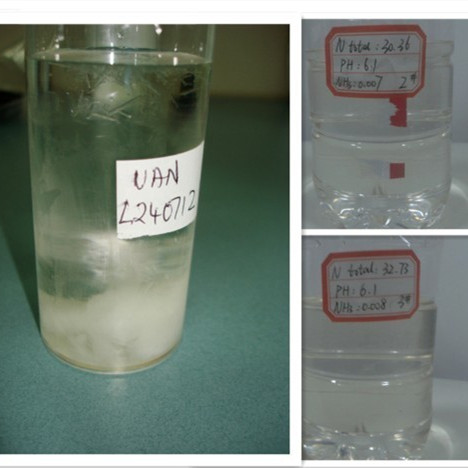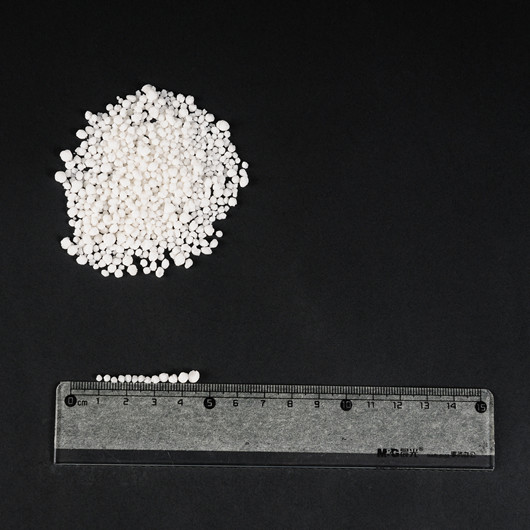Introduction
Nitrogen (N) fertilizers remain the most influential agricultural input for crop yield improvement. Among global nitrogen fertilizers, Urea (46-0-0) and Calcium Ammonium Nitrate (CAN, typically 26–27% N) are two of the most widely used. Although both supply nitrogen, they differ significantly in nutrient release speed, volatilization risk, soil interaction, yield response, and environmental impact.
A clear understanding of calcium ammonium nitrate vs urea is therefore essential for farmers, agronomists, fertilizer traders, and agricultural policymakers. This article presents a comprehensive, research-based analysis, including real-world data, agronomic comparisons, cost-effectiveness discussions, and suitability across soil and climate conditions.

Chemical and Agronomic Differences
Basic Composition
| Fertilizer Type | Composition | Nitrogen Form | Typical N% | Additional Nutrients |
|---|---|---|---|---|
| Urea | CO(NH₂)₂ | 100% amide N (converted by urease) | 46% N | None |
| Calcium Ammonium Nitrate (CAN) | Mixture of ammonium nitrate + limestone/dolomite | 50% ammonium N, 50% nitrate N | 26–27% N | Ca, Mg |
Key Insight
Urea has a higher nitrogen concentration, making it cheaper to transport and store.
CAN provides immediate nitrogen availability via nitrate, plus soil-stabilizing calcium/magnesium.
For more information about ammonium calcium nitrate fertilizer, please see: The Benefits and Applications of Calcium Ammonium Nitrate Fertilizer
Nutrient Release and Efficiency
Nitrogen Conversion Speed
Urea must undergo enzymatic hydrolysis and then nitrification, which can be influenced strongly by soil pH, moisture, and temperature.
CAN offers directly available nitrate-N and ammonium-N, providing both immediate and sustained feeding.
Research Data: Nitrogen Uptake Efficiency
(FAO & University of Minnesota agronomic trials)
| Fertilizer | Average Nitrogen Use Efficiency (NUE) |
|---|---|
| CAN | 65–75% |
| Urea | 40–55% |
Why CAN often shows higher NUE
No need for urease conversion → lower losses
Less volatilization
More balanced nutrient release
Volatilization and Leaching: Environmental Impacts
Volatilization Losses
Urea is known for high ammonia volatilization, especially in hot and alkaline soils.
Data: Average NH₃ Volatilization
| Soil Condition | Urea Loss (%) | CAN Loss (%) |
|---|---|---|
| Neutral loam | 15% | 2% |
| Alkaline soil (pH > 7.5) | 30–35% | 2–4% |
| High temperature (>30°C) | 40%+ | <5% |
Conclusion
Under high temperature or alkaline conditions, CAN performs far better than urea, improving both fertilizer efficiency and environmental sustainability.
Crop Yield Impact: Research-Based Findings
Multiple field trials across Europe, South Asia, and Africa consistently show yield advantages when CAN replaces urea—especially in stress-prone soils.
Sample Yield Comparison
(Wheat yield trials—European Nitrogen Research Alliance)
| Fertilizer | Avg. Yield (t/ha) | Yield Increase vs Urea |
|---|---|---|
| CAN | 7.1 t/ha | +8–12% |
| Urea | 6.4 t/ha | — |
Key Contributors to Yield Difference
Better nitrogen availability during early growth
Reduced soil acidity
Improved root development due to Ca/Mg
Less volatilization → more N reaches the crop
For information on the application of urea in apple trees, please see: The Application of Urea Fertilizer for Apple Trees
Soil Health Effects
Repeated urea application increases soil acidity due to nitrification. CAN, containing calcium carbonate or dolomitic limestone, counteracts acidification.
Research Data: Soil pH Change After 3 Years
| Fertilizer | Initial pH | Final pH (3 years) | Change |
|---|---|---|---|
| Urea | 6.4 | 5.6 | -0.8 (more acidic) |
| CAN | 6.4 | 6.3 | -0.1 (stable) |
Soil Health Conclusion
CAN is significantly more soil friendly, especially in long-term applications.
Safety, Storage, and Handling
Urea is chemically stable and safe, while CAN contains ammonium nitrate—requiring more regulated handling.
| Factor | Urea | CAN |
|---|---|---|
| Explosive risk | None | Controlled due to ammonium nitrate |
| Hygroscopicity | Moderate | Lower than urea |
| Storage stability | Good | Very good |
CAN is safer than pure ammonium nitrate, but still governed by regulations in some countries.
This makes supplier expertise and proper certification critical.
Cost Comparison: Which Is More Economical?
Although urea is cheaper per ton, CAN may offer higher return per unit of nitrogen absorbed.
Example Cost Model
(Per hectare for maize, assuming 150 kg N requirement)
| Fertilizer | N Required | Price per Ton | Cost/ha | Estimated Losses | Effective N Delivered | Cost per Effective N |
|---|---|---|---|---|---|---|
| Urea | 326 kg | Lower | Lower | 30–40% loss | Medium | Higher |
| CAN | 556 kg | Higher | Higher | 5–10% loss | High | Lower |
Cost Conclusion
Per ton → urea is cheaper
Per kg of effective nitrogen absorbed → CAN is often cheaper
Suitability by Crop and Soil Type
Crop Suitability
| Crop Category | Urea Suitability | CAN Suitability | Notes |
|---|---|---|---|
| Cereals | Good | Excellent | CAN boosts early-stage N availability |
| Vegetables | Moderate | Excellent | Sensitive crops benefit from Ca & Mg |
| Pasture | Good | Good | Both commonly used |
| High-value crops (fruits, tobacco) | Poor–Moderate | Excellent | Urea leaf scorching risk |
| Cold-climate crops | Good | Very Good | CAN nitrate works better in cool soils |
Summary
CAN is best for high-value, vegetable, and early-growth-critical crops.
For information on the effects of calcium ammonium nitrate on crops, please see: Calcium Ammonium Nitrate for Crop Yield Improvement
Climate Performance: Warm vs Cool Regions
| Climate Type | Urea Performance | CAN Performance |
|---|---|---|
| Hot, dry, alkaline | Poor due to volatilization | Excellent |
| Cool, moist | Good | Very good |
| Tropical monsoon | Moderate | Good |
| Temperate | Good | Very good |
Environmental Sustainability
Studies show CAN has 20–40% lower total nitrogen losses, improving soil carbon balance and reducing greenhouse gas emissions.
Key Environmental Benefits of CAN
Lower NH₃ emissions
Reduced soil acidification
Less nitrate leaching compared to straight ammonium nitrate
More stable supply of N during variable weather
Summary Table: Calcium Ammonium Nitrate vs Urea
| Property | Urea | Calcium Ammonium Nitrate (CAN) | Winner |
|---|---|---|---|
| Nitrogen content | 46% | 26–27% | Urea |
| Nitrogen efficiency | 40–55% | 65–75% | CAN |
| Volatilization risk | High | Low | CAN |
| Soil acidity impact | Acidifying | Neutralizing | CAN |
| Crop yield response | Good | Better | CAN |
| Price per ton | Lower | Higher | Urea |
| Cost per effective N | Higher | Lower | CAN |
| Environmental performance | Weaker | Stronger | CAN |
| Storage safety | Very safe | Safe with compliance | — |
| Suitability for high-value crops | Moderate | Excellent | CAN |
Final Recommendations
Choose Urea when:
✔ Cost per ton is the primary concern
✔ Soil is neutral/slightly acidic
✔ Application occurs before rainfall or irrigationChoose CAN when:
✔ You need higher nitrogen efficiency
✔ You operate in hot, dry, or alkaline regions
✔ Soil acidification is a concern
✔ High-value crops require calcium and magnesium
✔ You prioritise environmental sustainability
View related products:
Conclusion: Why San Corporation Is Your Best Partner for CAN, Urea, and Nitrogen Fertilizers
When choosing between calcium ammonium nitrate vs urea, the optimal solution depends on crop type, soil condition, climate, and cost-efficiency needs. However, both require consistent, high-purity, safe, and reliable supply, especially for industrial-scale farms and global distributors.
This is where San Corporation stands out.
Why Choose San Corporation?
1. China’s Largest Ammonium Nitrate Exporting Enterprise
Since 2002, San Corporation has grown into the largest ammonium nitrate exporter in China, with approval from the National Defense Department—a certification held by only a handful of companies.
2. Massive Production Capacity & Advanced Technology
1.2 million tons annual ammonium nitrate capacity
80,000 tons annual export volume
Advanced patented technologies from 8 countries, including Germany, Japan, France, and Norway
Comprehensive product lines:
Porous Prilled Ammonium Nitrate (PPAN)
Calcium Ammonium Nitrate
Urea
Chemical Pure Ammonium Nitrate
Calcium Nitrate
Urea Ammonium Nitrate Solution (300,000–400,000 ton capacity)
3. Superior Product Quality
Low moisture content (≤0.05%)
High oil absorption (12–14%)
High crushing strength
Outstanding detonation velocity for industrial-grade AN (>3200 m/s)
Stable, caking-resistant prills designed for export markets
4. Trusted Worldwide
San Corporation has long-term partnerships with global distributors, government procurement agencies, military buyers, and major mining corporations.
The company does not accept small retail orders, ensuring full compliance with international safety standards.
5. Strategic Philosophy for Long-Term Reliability
Guided by:
"Technology builds enterprises, steady operation prospers them"
San Corporation integrates innovation, industrial optimization, and capital strength to maintain sustainable development.
Final
If you are a global fertilizer distributor, industrial buyer, large-scale farm, mining company, or government procurement agency seeking:
High-quality Calcium Ammonium Nitrate
Reliable Urea supply
Specialized ammonium nitrate products
Lowest cost with highest safety
Long-term, stable cooperation
San Corporation is the premier supplier you can trust.
Contact San Corporation today to secure the highest quality nitrogen fertilizers at the most competitive global prices.



